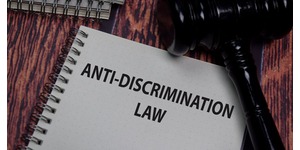
On January 31, 2024, Zachary Greenberg, a Pennsylvania lawyer, asked the United States Supreme Court to hear his case challenging a rule prohibiting lawyers from knowingly engaging “in conduct constituting harassment or discrimination” based on race, sex, religion, and other grounds. See Zachary Greenberg, Petitioner v. Jerry Lehocky, in His Official Capacity as Board Chair of the Disciplinary Board of the Supreme Court of Pennsylvania, et al., 23A513 (filed on Jan. 31, 2024).
Greenberg, a First Amendment activist, sought to enjoin the Pennsylvania Disciplinary Board from enforcing the rule against him. The district court preliminary enjoined the disciplinary agency from applying the rule finding that Greenberg had standing to challenge the rule. Further, the district court found that the rule objectively chilled his desired speech. In response the Disciplinary Board and Supreme Court of Pennsylvania amended Rule 8.4(g) to prohibit “harassment” defined to include “denigrating or showing hostility or aversion toward a person” on any of the rule’s protected bases, while the original rule barred manifestations of bias and prejudice.
Thereafter, Greenberg supplemented his complaint to the court. In response, the disciplinary board stipulated that Greenberg’s intended activities would not violate the rule and that the agency would not pursue discipline for any of his activities. Despite this, the district court again considered the issue holding that Rule 8.4(g) regulated speech, not conduct, and that it was an unconstitutionally vague, overbroad, and view-point discrimination regulation. On appeal, the Third Circuit reversed the district court finding that Greenberg lacked standing to challenge amended Rule 8.4(g). Greenberg has now requested the United States Supreme Court to take up his case arguing that he has standing to challenge the revised version of Rule 8.4(g). Only time will tell whether the Court will agree to hear Greenberg’s case.
Additional information on the background of the anti-bias and anti-harassment rule, as well as different states approach to this rule, can be found here.
